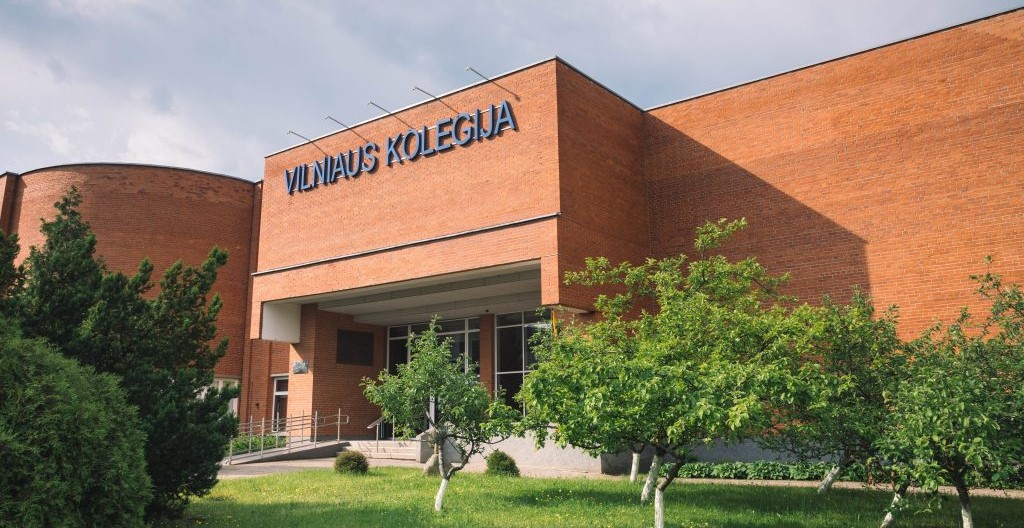Starting from September 1st, 2025, the Faculty of Arts and Design began its activities. It was formed by merging the Faculty of Arts and Creative Technologies and the Faculty of Design.
The Faculty operates in two buildings adapted for studies, creative, and artistic activities:
Didlaukio St. 82 (Baltupiai)
LT-08303, Vilnius

Olandų St. 16 (Antakalnis)
LT-01100, Vilnius

The Faculty of Arts and Design of Vilniaus kolegija / Higher Education Institution was established in 2025 through the reorganization of the Faculty of Arts and Creative Technologies and the Faculty of Design.
The Faculty of Arts and Creative Technologies was founded in 2013 by merging the Faculty of Arts and the Faculty of Design and Technologies. The origins of the Faculty of Arts of Vilniaus kolegija / HEI trace back to the Vilnius Conservatory, which was established by merging the Vilnius J. Tallat-Kelpša Higher Music School and the Vilnius Higher School of Culture. The Faculty of Design and Technologies was founded in 2003 by merging the Technology Study Center of Vilnius College, the Apparel Study Center, and the reorganized Vilnius Higher School of Light Industry.
The Faculty of Design was established in 2002 through the reorganization of the Vilnius Higher School of Construction and the establishment of the Vilnius College of Construction and Design. Its origins date back to the times of the Vilnius Technical School of Construction, when students began to be trained in the field of architecture.
The Faculty of Arts and Design consists of:
- The Department of Design, which administers the Graphic Design and Interior Design study programmes;
- The Department of Fashion Design, which administers the Fashion Technologies and Business, Fashion Design, and Image Design study programmes;
- The Department of Media Arts, which administers the Multimedia Design and Photography Technologies study programmes;
- The Department of Performing Arts, which administers the Musical Theatre, Popular Music, and Management of Cultural Activity study programmes.
The Faculty of Arts and Design is a community of creators and educators united by shared goals. It prepares specialists in demand on the market: drama and musical theatre actors, soloists, music performers, cultural activity managers, highly qualified image and fashion designers, fashion product technologists and constructors, as well as specialists in interior, graphic, multimedia design, and photography technologies, able to adapt to changing needs and professionally implement their creative ideas.
Lecturers of the Faculty actively engage in artistic activities and participate in various academic projects both in Lithuania and abroad. Their works are showcased in concerts, performances, exhibitions, competitions, workshops, design festivals, and creative projects. Lecturers also actively participate in scientific activities – publish articles in academic journals, give presentations at conferences, conduct applied research, and improve their qualifications through courses, seminars, and internships.
The Faculty maintains active cooperation with educational institutions in Lithuania, Belgium, Bulgaria, Denmark, Estonia, the United Kingdom, Latvia, Poland, the Netherlands, Portugal, France, Slovakia, Finland, Turkey, Hungary, and other countries.
The study programmes offered by the Faculty of Arts and Design are continuously updated to reflect market needs, educational innovations, and the evolving requirements for professionals to be trained.
Vision of the Faculty
The Faculty of Arts and Design aims to become a modern and internationally recognized center for applied arts and design studies and research, which ensures high-quality education, develops applied scientific research and artistic activities, educates critically thinking and creative professionals, and strengthens national and international academic cooperation.
Mission of the Faculty
To train practice-oriented professionals with higher non-university education, create and develop knowledge in applied arts, design, cultural activities, and creative technologies, and carry out artistic, educational, and intercultural activities through active collaboration in both national and international contexts.